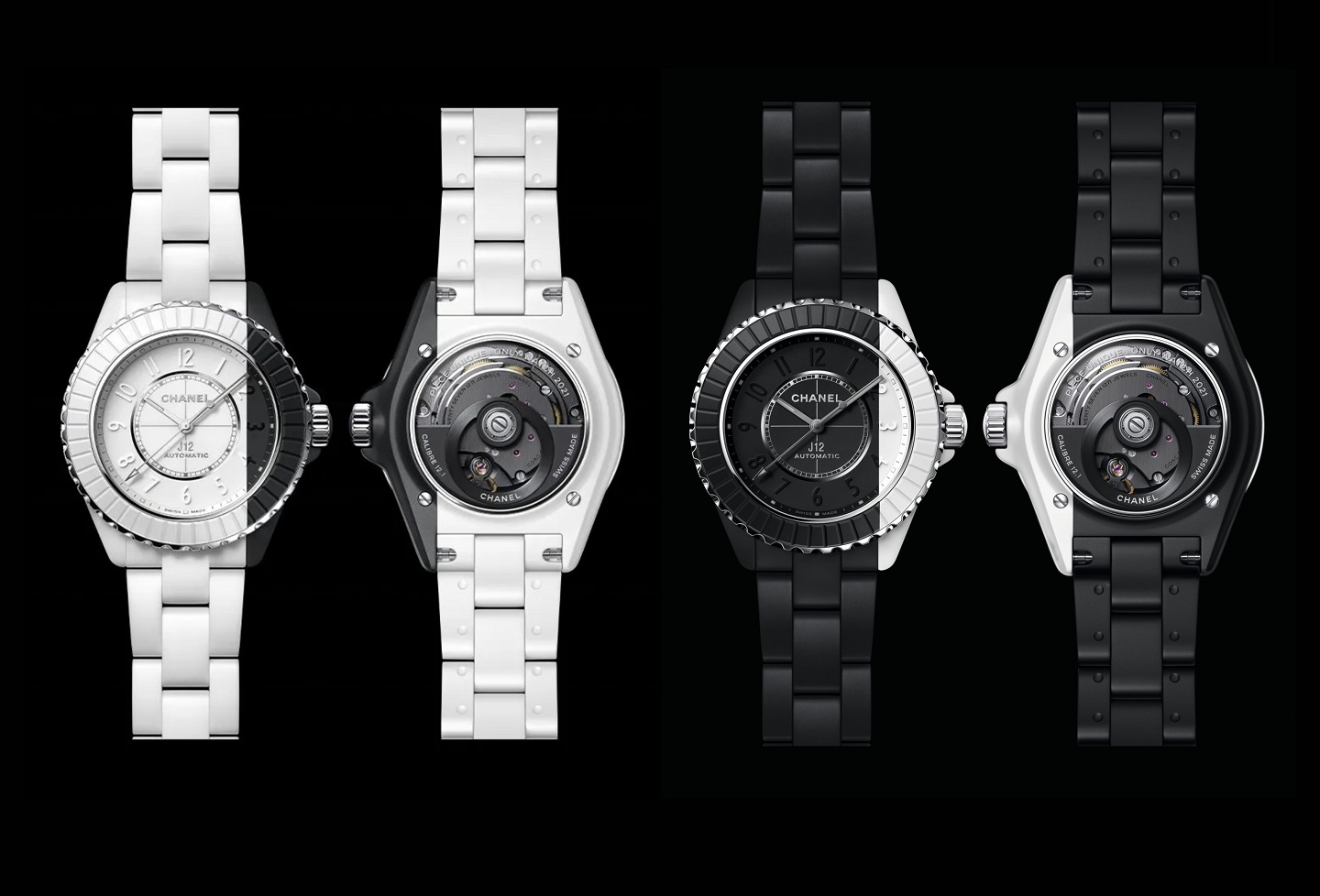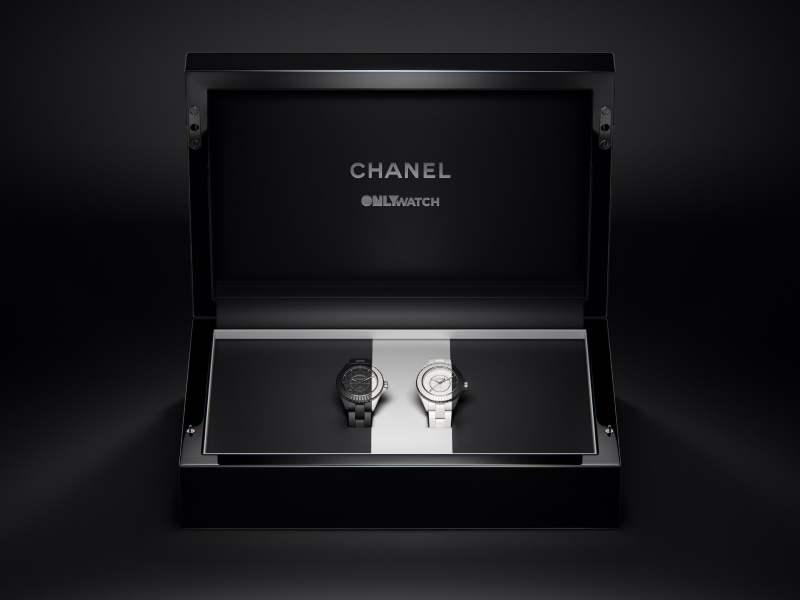
The J12 Paradoxe exemplified the wilful and contrarian spirit of Gabrielle Chanel (All photos: Chanel)
By any definition or standard, Gabrielle “Coco” Chanel was a rebel. Luxury fashion was the chosen medium for her brand of anarchy, starting with the eponymous christening of her empire at a time when few women owned namesake businesses. Chanel was founded in the couture capital of Paris in 1910 and went on to dress women of all ages in style and confidence for over a century.
Part of Gabrielle’s charm was that she genuinely had little regard for the opinions of others: “I don’t care what you think of me. I don’t think of you at all,” she is quoted as saying. It corroborates with the legendary defiance of this trendsetter, whose legacy continues to inspire new generations of women to be the masters of their own fate. Throw caution to the wind, she seemed to suggest, let instinct and passion drive you all the days of your life.
She walked the talk, too. Gabrielle partially grew up in an orphanage where the nuns taught her to sew her way to independence. She earned a living as a seamstress and a cabaret singer in cafés until word spread among the upper echelons about her exceptional hats that were completely at odds with the trends of the time. Traditional millinery was still tied to the aesthetics of the corset and crinoline, but Gabrielle liberated women from these metaphorical cages by introducing sportier silhouettes with clean and soft lines. Decades before “disruptive” would become a buzzword, she was already steadily swimming against the currents of societal expectations and ideas of elegance.
chanel_ecrin_duo_onlywatch-hd_1.jpg

In the age of costly materials and rigid shapes, she was drawn to the unstructured softness and freedom of movement proposed by the humble jersey, tenets womenswear continues to uphold a century later. It was a terrific precedent for the Roaring Twenties, when nonconformity became the norm and Chanel’s little black dress took the fashion world by storm. American Vogue termed the LBD “Chanel’s Ford”, the sartorial equivalent of Henry Ford’s democratic Model T automobile, whose practicality and accessibility gave the ordinary man licence to travel.
Gabrielle spoke the language of everyday women and answered in her designs their yearning for freedom and empowerment. An avant-garde visionary, she was also an astute businesswoman with a keen nose for opportunity, soon complementing her fashion with fragrance. Her perfumery debut was Chanel No 5, which transcended decades of shifting trends and tastes to remain very much in demand today.
The savvy entrepreneur took plenty of risks and the maison upheld this boldness after her death, venturing into horology in the 1980s. This was a surprising playground for the brand, considering the fight for domination then by stalwarts in Switzerland and the Japanese, who were mass producing affordable quartz timepieces.
No one expected a fashion house to have a noticeable impact on the watchmaking scene. Chanel was one of the few labels that dared to even try with the aptly named Première in 1986 that took its angular cues from the clipped corners and cabochon stopper of the Chanel No 5 bottle. It was only fitting, after all, that one revolution inspires another.
And what a revolution. Chanel’s stable of timepieces rapidly grew in volume, sophistication and reputation under the helm of then artistic director Jacques Hélleu, who introduced the drama of haute couture into the technicality of haute horlogerie. Chanel was not just playing at dress-up here — it was actively pursuing innovation in several domains.
The J12 family of sporty black or white watches, for one, is characterised by liberal experimentation. Born at the turn of the new millennium and inspired by Hélleu’s predilection for fast cars and yachts (it is named after the 12m J-class racing yachts of the 1930s), it represented the future of watchmaking within the house. Over the years, it clocked in accomplishments such as developing the world’s first sapphire crystal bracelet in the J12 X-Ray while equipping complications such as the GMT and tourbillon with an array of precious stones.
Most extraordinary, however, was its use of ceramic from the start, when few watchmakers were seriously investing in this high-tech material. Typically found in car parts or space shuttle heat shields, ceramic is notoriously difficult to work with. Yet, work with it Chanel did and as the lightweight and durable material grew in popularity in the world of haute horlogerie, the fashion house was leading the charge into mainstream markets.
And in 2020, Chanel did the impossible. To celebrate the 20th anniversary of the J12, it married the black and white alter egos of the watch into a single model, endowing the J12 Paradoxe with never-before-seen duality. It was as though day and night had become one, or Jekyll and Hyde had found a way to coexist simultaneously.
The two-tone timepiece saw two-thirds of its case in executed black or white ceramic while the remaining third — a clean line separating 2 o’clock to 4 o’clock from the rest of the numerals — comprised the opposite colour. The challenge of achieving this cannot be overstated. Ceramic is four times harder than steel yet incredibly brittle and delicate, which makes machining it a nightmare with a high potential of failure or breakage. However, Chanel appeared to have neatly sliced its black and white ceramic watches and fitted them together like jigsaw pieces.
Behind the magic is pure mastery over machine and technique. The cases are produced by G&F Chatelain, the buckle and case maker owned by Chanel, and are fabricated from two sections of ceramic anchored together by an inner steel frame and screws. The movement is contained within the frame of the multi-part construction while the single-piece dial and bezel inserts mimic the dual colours of the case, treated with a two-toned finish.
chanel_manufacturechatelain4-hd.jpg

Technical accomplishments aside, the J12 Paradoxe exemplified the wilful and contrarian spirit of Gabrielle Chanel. It played the game on its own terms, creating a revolutionary idea that might someday be adopted into watchmaking drawing books as design de rigueur. It was a paradox that spoke to the dual nature of humankind, the same way the J12 has always straddled the divide between the masculine and feminine to become among the ultimate unisex watches in any collection.
And for Only Watch 2021, the biennial charity auction of luxury timepieces, Chanel created two unique editions of the J12 Paradoxe as opposing forces. The 38mm watches are available in matte black with a slice of white ceramic and a predominantly white version with a black ceramic counterpart. Time-telling is powered by the chronometer-certified self-winding Calibre 12.1, manufactured exclusively for Chanel in a special black edition with the engraving “Pièce unique. Only Watch 2021” visible through the sapphire crystal caseback. The ceramic bracelet is secured with a steel triple-folding clasp.
Since its inception in 2005, Only Watch has raised over €70 million across eight editions with some 99% of proceeds directed towards Duchenne muscular dystrophy research. Fifty-four watchmakers will be participating in this year’s edition on Nov 6 at the Four Seasons Hôtel des Bergues in Geneva with Christie’s auction house holding the hammer.
The special J12 Paradoxe set is sure to raise its share of eyebrows and funds. Its contradictory personality is one Gabrielle herself might have been proud of, she who was as elegant as she was stubborn. This duo is the distillation of her values and legacy, from her glamour and intrigue to her wit and brilliance. In a world rich in nuance and grey areas, she chased the impossible because she understood that few things are truly ever black or white. And now, neither is the J12.
This article first appeared on Sept 20, 2021 in The Edge Malaysia.


